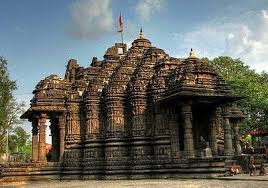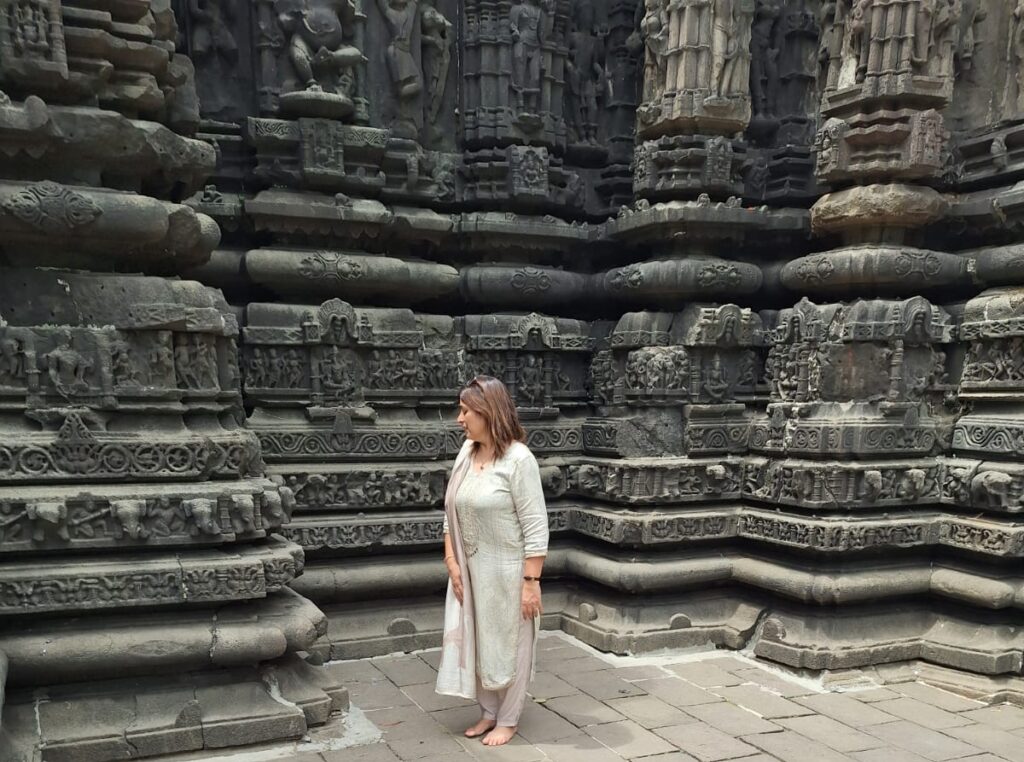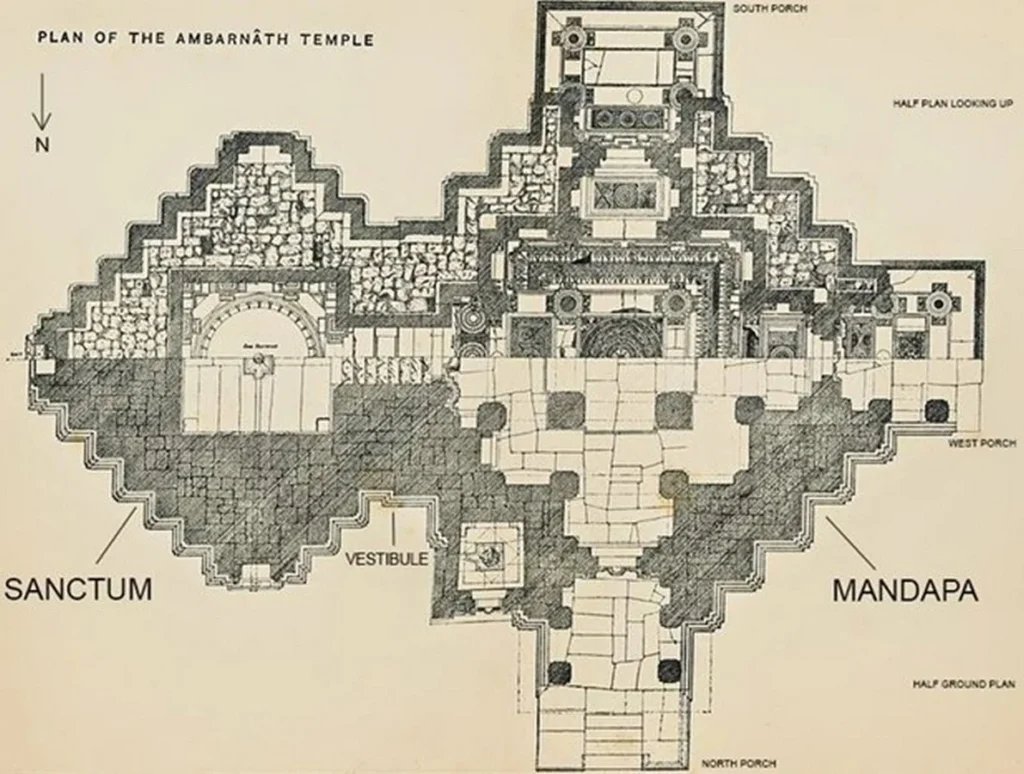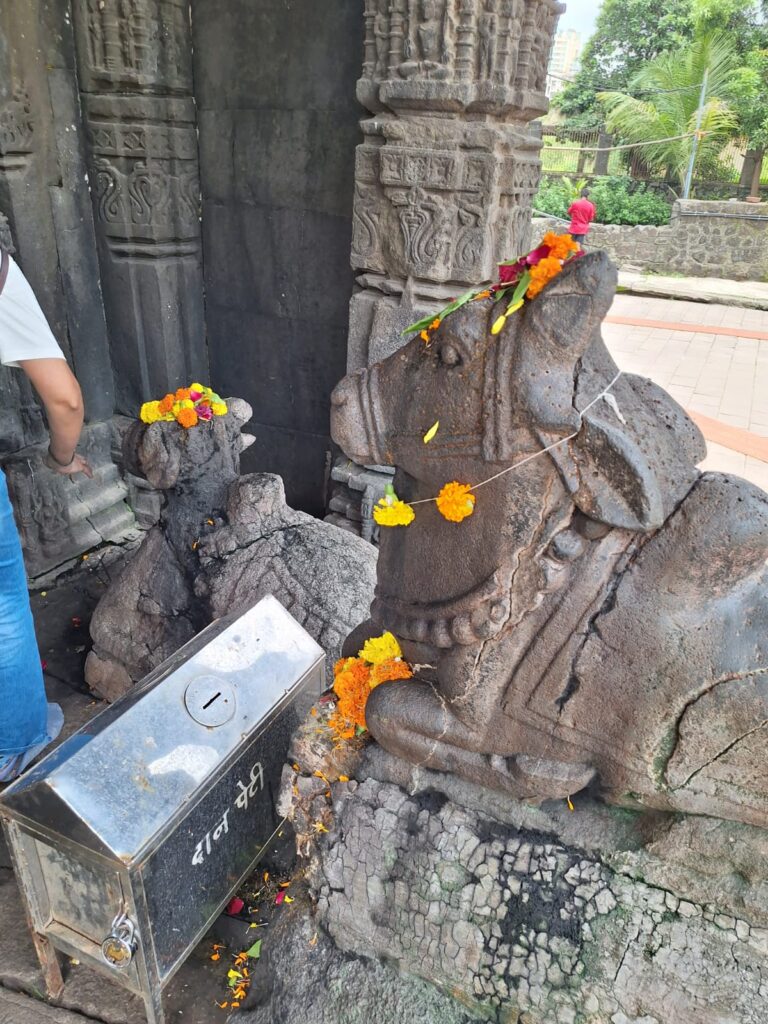



In the town of Ambernath near Mumbai lies the 1,000-year-old Ambreshwar Shiva Temple, a living example of how spiritual architecture and vastu shastra blend in harmony. Built in 1060 AD by the Shilahara king Chhittaraja, it may also have been rebuilt by his son Mummuni. This temple is a sacred site . Some local legends suggest that the Ambreshwar Temple was built or discovered by the Pandavas during their exile.
Architectural & Spiritual Brilliance
The temple reflects a mix of Hemadpanthi and Bhumija architectural styles built without cement using interlocking stones and featuring vertical geometry in its design. The structure is adorned with intricate carvings of deities, animals, and natureeach holding vastu and spiritual meaning.
Vastu Shastra Insights in the Temple Layout
Here’s how the temple aligns with key vastu principles: – Three Entrances East, West, and South. The temple has three main doorways. The east entrance, considered the most auspicious in vastu, is enhanced by a pair of Nandi bulls placed near it. Nandi, as Lord Shiva’s divine vehicle, guards the energy and strengthens spiritual intent.
Open Shikhara (Spire)
The Shikhara of the temple is open at the top, unlike most temples. While some believe it was never completed, others feel it symbolically relates to the name Ambernath (Ambar = sky, Nath = Lord), meaning “Lord of the Skies”. An open top allows direct cosmic connection, a unique, vastu feature that enhances upward energy flow.
Mandapa (Hall):
This is the entrance hall where devotees gather before moving towards the sanctum. It serves as a space for collective prayers and spiritual preparation.
Antarala (Vestibule):
A small transitional chamber between the Mandapa and the Garbhagriha. It helps in energy containment and focusing the devotee’s mind before entering the innermost sacred space.
Garbhagriha (Sanctum):
Located 20 steps below ground in the west zone, this houses the Swayambhu Shivlinga. It is the most sacred part of the temple where spiritual energies are strongest.
Nandi Mandap:
A separate pavilion or space where the pair of Nandi bulls are seated, especially near the east entrance, signifying protection and devotion.
The Ambreshwar Shiva Temple teaches us how every corner, idol, and direction holds meaning. Whether it’s the grounding sanctum, or cosmic Shikhara, it all aligns with vastu wisdom.
© 2025, vastuwithkavita.com All Rights Reserved. Developed by dmark.co.in